No matter how operational your business has been, or how “open” it can be now, or how your goals have changed, sooner or later your local search visibility again will be one of your sorest spots. Whether that’s already happened or is still a while off, at the very least you don’t want your local SEO to be in worse shape than it was before the lockdown.
There’s a good chance you’ve been open in some capacity this whole time. So when I say “reopening” I’m referring to whenever you’re (1) welcoming more in-person business and (2) focusing more of your local SEO effort on drumming up that in-person business. My guess is you’re not emerging suddenly.
Of course, I don’t know your specific situation, so I assume it’s safe and legal for you to “reopen” in one manner or another. I assume you’ll apply your best judgment.
I’ve put together a quick checklist of the main quick tasks to help you pick up your local SEO effort where you left off, and maybe even make a little progress. Here’s my “reopening” checklist (chunked into sections for clarity):
Google My Business (“GMB”)
- Make sure your GMB page is not marked “temporarily closed.” The ideal situation is you never did that, because for a while marking your business as “temporarily closed” would you from the 3-pack (from what I saw). In any event, now is probably a good time to mark it as “open.” By now, most people know to check with you if they’re unsure of your hours or SOPs.
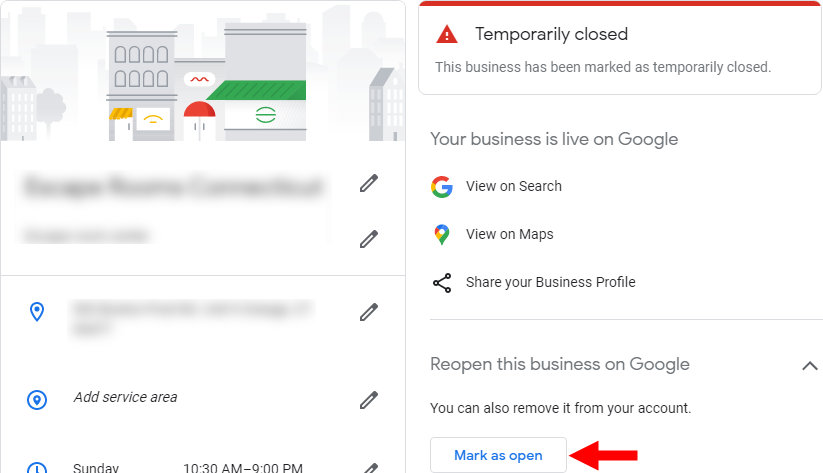
- Accept or deny any auto-updates Google has made on your GMB page, depending on whether they’re accurate.
- Make sure your latest GMB post reflects your current status, especially if you created a sticky post or a “COVID update” post.
- Confirm your GMB description is up-to-date.
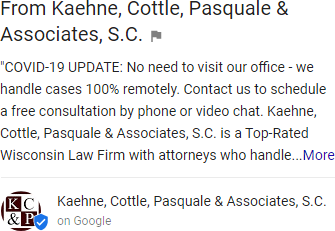
- Submit edits on any recent keyword-stuffing in competitors’ Google My Business “name” fields. (In the COVID era Google has allowed certain kinds of descriptive phrases in there, which of course certain people have used as a justification to keyword-stuff even more than they did before .)
Website
- Make sure your title tags reflect your status as of reopening time (if you updated any of your title tags to reflect your COVID status). Even if your title tags are unchanged, at least your description tag (or even a sitelink) should anticipate and address the question on everyone’s mind.
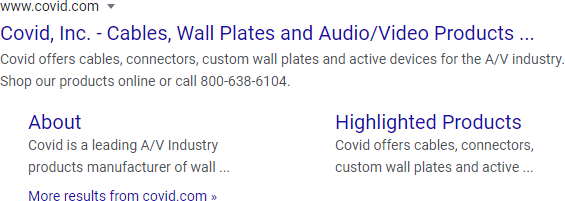
- Make it clear whether your online or “virtual” offering is available long-term, once you’ve resumed seeing customers / clients / patients in-person. Many business owners scrambled to roll out that kind of service and to create a page for it, but many of them conflated that page with their “COVID policies” page. So you want to make it clear to people whether your virtual offering is or was strictly a spring of 2020 thing.
- Confirm your “contact” page reflects your current status: how open you are, your hours, willingness to offer a virtual service, etc.
Reviews
- Determine whether Google is allowing new Google Maps reviews through. As you may know, Google put new reviews on hold for a while, though Google been allowing some reviews through (to varying degrees) since about mid-April, from what I’ve observed. Do a dry run by asking someone you know (customer or not) to leave you a Google review. A few hours later or maybe the next day, sign out of your Google account, open an incognito browser tab, and see if you can see the review in Google Maps.
- Try responding to a Google review to confirm whether Google has restored your ability to respond to reviews. (Yep, that feature also was on ice for a while.)
- Encourage a recent customer or other reviewer to mention your safety protocols in his or her review. That accomplishes at least a couple things: it makes it clear you’ve seen customers recently, and it gives would-be customers a sense of your business’s current SOPs.
Other
- If you run Google Ads (AdWords), make sure none of your ads or extensions has been pulled because you mentioned the pandemic or telehealth by name. (You can only refer to those obliquely.)
- If applicable, make sure HealthGrades shows correct answers in the FAQs section (which shows up because HealthGrades uses Schema FAQs markup).
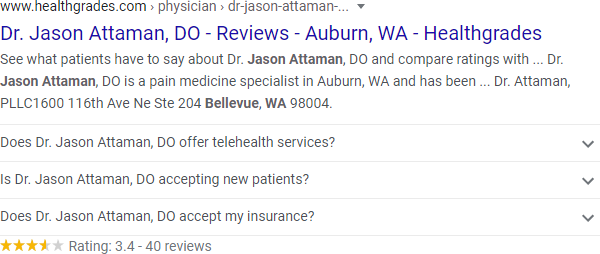
- Send a “howdy” or low-key announcement to anyone who may have wanted to visit your business or work with you in recent months, but who couldn’t. I’m referring to people you had to turn away, people who had safety concerns you may have addressed in the meantime, etc. I’m sure your website and Facebook page will convey the message, but I’d also recommend an email blast, a one-on-one email, or even (dare I say) a piece of snail mail. Even if your rankings are OK and you’ve got no local-visibility-related problems, it may be a while before you get any new customers through the local search pipeline. See who’s been stuck in the pipeline for the last few months. No doubt some people have lost interest, while others are in real bad need of what you offer.
Once you’ve reopened, of course you’ll get back to the same challenges you had before: getting more visible than your competitors are, and getting business out of the deal. Then you’ll be back to the same questions, like of how to earn good links, how to get good reviews, how to make your site as big and bad as it can be, how to keep a lid on competitors’ spam, and more. In a strange way it may feel good to get back to the point where those things are the biggest problems; they might not seem as daunting.
What else is on your reopening to-do list? Anything I forgot?
Any big decisions you’re pondering (that tie in with local search)?
Leave a comment!

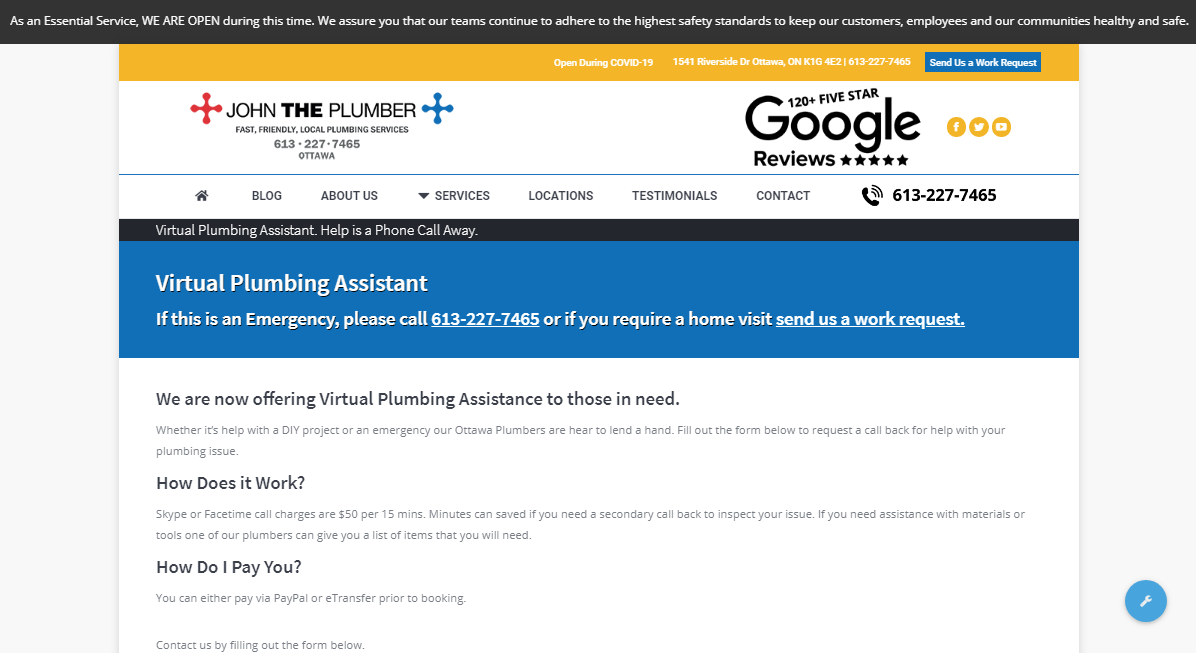
Great checklist of things that would be easy to forget when everything is opening up. Thanks for posting!
Thanks, Ryan. Yeah, lots of easy-to-overlook items.
Great checklist Phil – thanks for sharing it 🙂
Thanks, Andy. I hope you’re holding up OK!
Classic Phil! Thank you, friend.
Thanks, Layla!
Thank you Phil for always providing quality content. No fluff, straight to the point, and always on subject throughout a blog post.